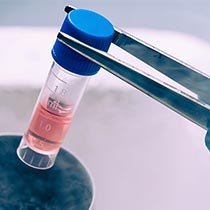
During the course or struggle of infertility, the most important process is of embryo transfer and even more crucial is the right time for this process to be performed. Thus, it is very important for our infertility specialists to choose the right time for embryo transfer, that being the time with which our patients could benefit the most and have the highest chance of conceiving.
Embryo transfer is the technique performed at many infertility clinics including Australian concept infertility Center with the help of our infertility specialists as well as the embryologists, who work as a team to transfer the embryo with in a female uterus.
However, when this technique is delayed for different reasons, the major reason being patient welfare then it is called ‘delayed embryo transfer’
In delayed embryo transfer the fertilized embryo of our IVF (in vitro fertilization) patient are frozen so that they can be used in the future and be transferred in the female uterus when the conditions are feasible.
What is an embryo?
As a normal method of sexual reproduction in human beings, when an egg cell and a sperm cell, from a female and a male body respectively are fertilized they form a single celled organism called zygote, this zygote then undergoes cellular division to form an organism called embryo, which undergoes further growth and eventually forms into a fetus.
When this process of fertilization takes place outside a women’s body, and in a petri dish inside a lab, it is called in vitro fertilization IVF. An egg is retrieved from a female body after closely monitoring her ovulatory process and a sperm is retrieved from a semen sample of a male, these are then manually combined to form an embryo. The sperm is directly injected within the cytoplasm of an egg and this procedure is called intra cytoplasmic sperm injection (ICSI).
The in vitro fertilization process is given approximately five days for the embryo to divide and grow in size, it goes through the division cycle of two-cell, four-cell and eventually eight-cell embryo. The formation of an eight-cell embryo on day three of in vitro fertilization is considered a very good sign and points towards higher chances of success.

What actually is Embryo transfer and delayed embryo transfer?
Once an embryo is formed ‘in vitro’, it can be used in the following ways;
Either it can be transferred to the female uterus during the same ovulation cycle in which her eggs were retrieved and fertilized, this is called a fresh cycle embryo transfer. This includes all the stages of egg retrieval, fertilization, culture in lab for several days and embryo transfer during one menstrual cycle.
Or they can be frozen and used later for transfer and eventually implantation, this is called a delayed embryo transfer. This involves the freezing or cryopreservation of good quality embryos for future use, these frozen embryos can be used in the next cycle or after months and even after years, embryos frozen for as long as 10 years have also been reported to be successfully implanted!
Depending on a female’s condition during the egg retrieval cycle, the infertility specialists and embryologists decide whether to go for a fresh cycle embryo transfer or a delayed embryo transfer.
Considering the enhanced and improved techniques of embryo freezing now, many specialists opt for freezing all good quality embryos and use them once the recipient female’s uterus and ovaries have returned to a normal condition seeing that she has undergone intense hormonal stimulation during the ovulatory process and during the egg retrieval procedure.
What happens after the embryo is transferred?
Most couples ask this question, of course concerned about the fate of the new baby they just helped making, with an IVF treatment. They want to know the chances of them becoming parents with this embryo.
Well once the embryo is transferred to a women’s uterus, the final hurdle for the embryo to overcome is to get implanted! And this depends on the egg quality, sperm quality and then the embryo quality that resulted from the fertilization of the former two.
A brief description of what happens to an embryo after being transferred;
-The blastocyst continues to divide and emerges from its shell,
-It then starts to attach itself to the uterine lining,
-Once the blastocyst invades the uterine lining the process of implantation occurs and the women may experience some bleeding or spotting, however no bleeding doesn’t mean you have not conceived,
-The embryo then digs deeper and starts getting blood supply from the maternal blood vessels,
-As it continues to grow, a hormone called human chorionic gonadotropin (HCG) is released in the blood stream,
-More HCG is released when fetal development is in full swing and the placenta has developed,
-This is when one can take the home urine pregnancy test, around the 9th day of transfer however we at Australian concept infertility medical Center prefer you wait till 10-12 days for a blood beta-hcg test which is much more reliable. We give our couples a date to come and get tested for pregnancy and we love to give our couples the good news ourselves!







